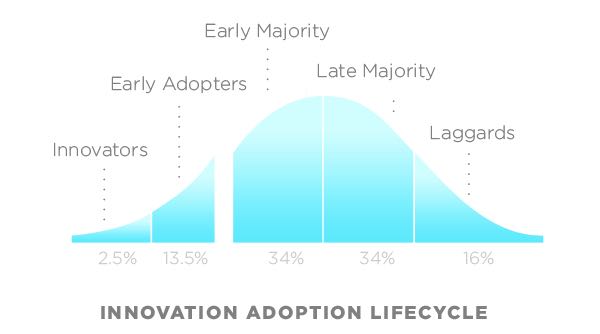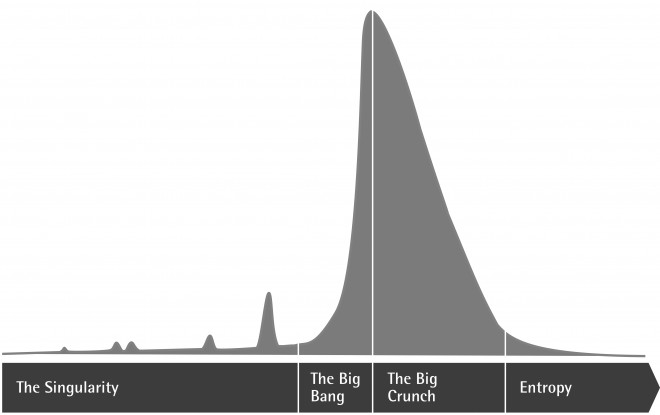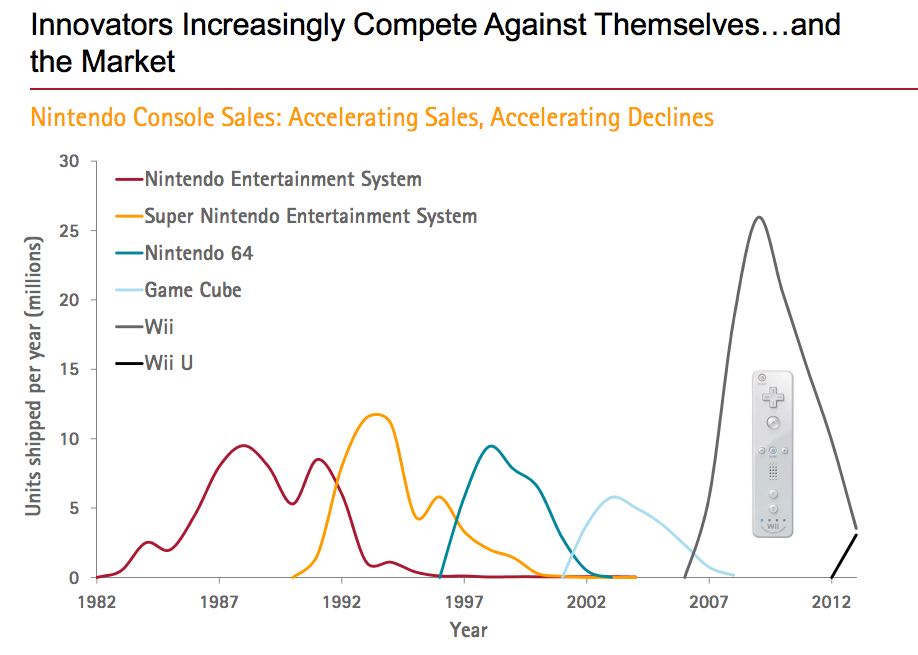Book review: Big Bang Disruption by Larry Downes and Paul Nunes
We will try to publish short book reviews on this blog, hopefully to inspire you to learn more about the stuff we love: disruptive innovation, startups, growth and team building – the things you need to know as a startup CEO or product manager in the 21st century.
The first one out is a book that was released in 2014 called “Big Bang Dispruption: Strategy in the Age of Devastating Innovation”. It’s written by Larry Downes and Paul Nunes and brings to the table a new version of the market segmentation made famous by Geoffrey Moore in the 1990s.
Moore wrote a book called “Crossing the Chasm“. Truly a business management classic, if ever there was one. In this book, he introduces the technology adoption lifecycle that looks like this:
You’ll notice there’s a gap between the early adopters and early majority. This gap is the chasm and every new technology product must struggle to pass it, getting from one group of users to another with vastly different views on what makes a great product.
Basically every product manager or startup CEO since this book was released knows about this model and keeps it at the back of their head when working out a strategy for their product.
But now, Downes and Nunes claim that this model is no longer relevant. They argue that the pace of change is so fast and the means of building, distributing and marketing products are so cheap and efficient that you instead end up with a picture that looks more like this (aka “the shark fin”):
You now have basically only two market segments: the early testers and everyone else.
The phases that a product goes through in this model are:
- The singularity. I’m not sure I agree with the naming of this phase, but it’s a phase of experiments, failed market launches and mostly disappointments. What’s happening under the surface, though, is that disruptive energy is gaining in strength as the technology and the market matures. You often hear from a failed startup that “the timing wasn’t right”. Well, that’s because they launched before there was sufficient “disruptive energy” to carry them in to the next phase.
- The big bang. This is when the market literally explodes with rapid growth as the result. Typically there are multiple players on the market.
- The big crunch. The market is slowing down and the number of players on it are reduced to a few big behemoths. Innovation becomes incremental and growth slows.
- Entropy. The market is almost dead with no innovation happening. Beware though, because someone somewhere is cooking up another singularity.
Some companies live and breathe this model. The picture below is taken from here and shows the different generations of Nintendo gaming machines.
Nintendo knows that they need to constantly disrupt themselves, otherwise other players will do it. Does it work? Isn’t Nintendo dead? Well. Maybe it does and maybe they’re not.)
The authors outline different strategies to adapt to in the different phases and this is best and meatiest part of the book. It’s a helpful framework when you, like we, are working with helping companies get from the singularity phase to the big bang phase as quickly as possible (or find greener innovation pastures before the entropy phase). It will definitely be part of our tool belt.
The most important message of the book, however, is that the accelerated pace of change has made the old rulebooks obsolete. Following what you learned as a business leader in the 20th century will in fact work against you in a time of big bang disruption and devastating innovation.
I would recommend the book to a startup CEO struggling with finding product/market fit. First of all it tells you: have patience. Second of all it tells you: don’t be afraid of the Megacorps who you think are your competitors. They are living in a different phase (the big crunch or even the entropy phase) where other rules apply. In fact, they should be afraid of you – but they’re not, which is why they will eventually stagnate and die. And if this book is right, that will happen sooner rather than later.
I would also recommend it to a product manager in a larger organisation. This is a helpful guidebook for getting started with an innovation program based on strategic experimentation.
Now, that’s a message that should bring hope to any startup CEO and fear to any product manager in a larger organisation. At least the product managers without a disruption strategy.
If you’re curious to know more about the shark fin, below is a good TEDx talk by Larry Downes.
You can of course also sign up to our mailing list below, or join us on twitter.


